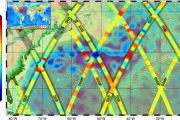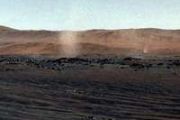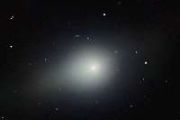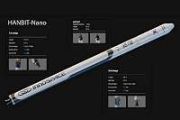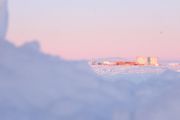
Copernical Team
Model-Independent Method to weigh protoplanetary disks
 Astronomers have found a way to directly measure the amount of gas in protoplanetary disks without needing to make assumptions about the relative amounts of different types of gas, making this method more accurate and robust than previous methods.
Planets form in protoplanetary disks of gas and dust around young stars. Scientists study protoplanetary disks by looking at their spectra, the
Astronomers have found a way to directly measure the amount of gas in protoplanetary disks without needing to make assumptions about the relative amounts of different types of gas, making this method more accurate and robust than previous methods.
Planets form in protoplanetary disks of gas and dust around young stars. Scientists study protoplanetary disks by looking at their spectra, the TESS discovers planetary system's second Earth-size world
 Using data from NASA's Transiting Exoplanet Survey Satellite, scientists have identified an Earth-size world, called TOI 700 e, orbiting within the habitable zone of its star - the range of distances where liquid water could occur on a planet's surface. The world is 95% Earth's size and likely rocky.
Astronomers previously discovered three planets in this system, called TOI 700 b, c, and d
Using data from NASA's Transiting Exoplanet Survey Satellite, scientists have identified an Earth-size world, called TOI 700 e, orbiting within the habitable zone of its star - the range of distances where liquid water could occur on a planet's surface. The world is 95% Earth's size and likely rocky.
Astronomers previously discovered three planets in this system, called TOI 700 b, c, and d Kleos Observer Mission Update
 Kleos Space S.A. (ASX: KSS, Frankfurt: KS1), a space-powered defence and intelligence technology Company, announces that two-way communication has been achieved with all four Observer Mission (KSF3) satellites that launched successfully on 3 rd January aboard the Transporter-6 SpaceX mission.
Bi-directional communication has been achieved with all four Observer Mission satellites. The sate
Kleos Space S.A. (ASX: KSS, Frankfurt: KS1), a space-powered defence and intelligence technology Company, announces that two-way communication has been achieved with all four Observer Mission (KSF3) satellites that launched successfully on 3 rd January aboard the Transporter-6 SpaceX mission.
Bi-directional communication has been achieved with all four Observer Mission satellites. The sate Planet and NASA Harvest launch commercial partnership to advance food security
 Planet Labs PBC (NYSE: PL), a leading provider of daily data and insights about Earth, and NASA Harvest, the federal space agency's Global Food Security and Agriculture Program, has announced a partnership to further support the joint Food Security and Agricultural Monitoring Solution. The offering aims to deliver policy-grade agricultural monitoring and assessments of potential threats to globa
Planet Labs PBC (NYSE: PL), a leading provider of daily data and insights about Earth, and NASA Harvest, the federal space agency's Global Food Security and Agriculture Program, has announced a partnership to further support the joint Food Security and Agricultural Monitoring Solution. The offering aims to deliver policy-grade agricultural monitoring and assessments of potential threats to globa NASA scientists and satellites make sense of Earth's subtle motions
 Creeping, rising, falling, slipping - some parts of Earth are in perpetual motion. The movements are usually too tiny for human senses to notice, but they offer clues about more significant changes happening inside volcanoes, along fault lines, and where tectonic plates meet and clash. That's why scientists at NASA's Jet Propulsion Laboratory in Southern California are using advanced tools and c
Creeping, rising, falling, slipping - some parts of Earth are in perpetual motion. The movements are usually too tiny for human senses to notice, but they offer clues about more significant changes happening inside volcanoes, along fault lines, and where tectonic plates meet and clash. That's why scientists at NASA's Jet Propulsion Laboratory in Southern California are using advanced tools and c NASA, DOD seek universities to develop cubesats for launch
 NASA's CubeSat Launch Initiative (CSLI) is collaborating with the U.S. Air Force and U.S. Space Force to solicit applicants for a set of hands-on learning engagements that will help higher education institutions, faculty, and students elevate efforts to build small satellites and enhance the potential to be selected for flight opportunities.
Teams selected for the University Nanosatellite
NASA's CubeSat Launch Initiative (CSLI) is collaborating with the U.S. Air Force and U.S. Space Force to solicit applicants for a set of hands-on learning engagements that will help higher education institutions, faculty, and students elevate efforts to build small satellites and enhance the potential to be selected for flight opportunities.
Teams selected for the University Nanosatellite Momentus to deliver FOSSA Systems satellites to orbit
 Momentus Inc. (NASDAQ: MNTS) has signed a contract with FOSSA Systems ("FOSSA"), a Spanish company that offers global low-power Internet of Things (IoT) connectivity and in-space services through its satellite constellation, to place its latest generation of satellites, FOSSASat FEROX, into low-Earth orbit on two Vigoride Orbital Service Vehicle missions starting in 2023.
The first group o
Momentus Inc. (NASDAQ: MNTS) has signed a contract with FOSSA Systems ("FOSSA"), a Spanish company that offers global low-power Internet of Things (IoT) connectivity and in-space services through its satellite constellation, to place its latest generation of satellites, FOSSASat FEROX, into low-Earth orbit on two Vigoride Orbital Service Vehicle missions starting in 2023.
The first group o Ball Aerospace enters final stages of building Space Force's next-gen weather satellite
 Ball Aerospace completed the spacecraft bus for the Weather System Follow-on-Microwave (WSF-M) satellite, the U.S. Space Force's next-generation operational environmental satellite system. Ball also finalized environmental testing on the Microwave Imager (MWI) instrument and has started final space vehicle assembly, integration and testing.
Upon delivery, WSF-M will provide mission data to
Ball Aerospace completed the spacecraft bus for the Weather System Follow-on-Microwave (WSF-M) satellite, the U.S. Space Force's next-generation operational environmental satellite system. Ball also finalized environmental testing on the Microwave Imager (MWI) instrument and has started final space vehicle assembly, integration and testing.
Upon delivery, WSF-M will provide mission data to OneWeb confirms successful deployment of 40 satellites
 OneWeb has confirmed the successful deployment of 40 satellites launched by SpaceX from Cape Canaveral Space Force Station. This launch is OneWeb's 16th to-date, with only two more launches remaining to complete its first-generation constellation enabling global connectivity in 2023.
Lift-off took place on Sunday, 9 January 2023 at 11:50 p.m. ET (local). OneWeb's satellites separated succe
OneWeb has confirmed the successful deployment of 40 satellites launched by SpaceX from Cape Canaveral Space Force Station. This launch is OneWeb's 16th to-date, with only two more launches remaining to complete its first-generation constellation enabling global connectivity in 2023.
Lift-off took place on Sunday, 9 January 2023 at 11:50 p.m. ET (local). OneWeb's satellites separated succe SimX awarded US Space Force contract to adapt VR Medical Simulation Training for astronaut applications
 The Virtual Advancement of Learning for Operational Readiness (VALOR) program at SimX, Inc. has been awarded a multi-year program by the U.S. Space Force (USSF) to develop a novel VR medical simulation training capability for the astronaut recovery and space launch missions. This program seeks to enhance the unique, mission-critical clinical training provided to U.S. Air Force (USAF) Pararescue
The Virtual Advancement of Learning for Operational Readiness (VALOR) program at SimX, Inc. has been awarded a multi-year program by the U.S. Space Force (USSF) to develop a novel VR medical simulation training capability for the astronaut recovery and space launch missions. This program seeks to enhance the unique, mission-critical clinical training provided to U.S. Air Force (USAF) Pararescue 


